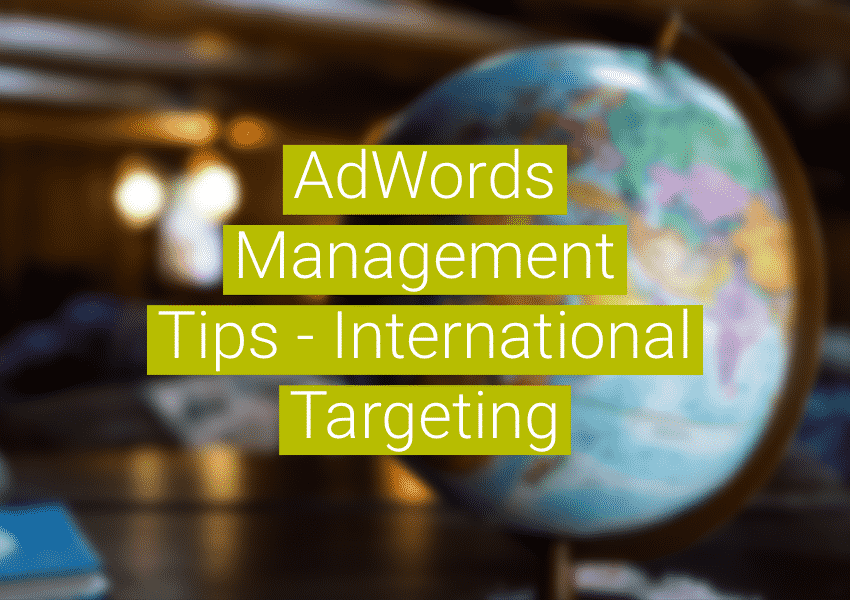Are you struggling with converting your website traffic into actual customers? It can be frustrating to see plenty of visitors, yet sales remain stagnant. The issue could be with your landing page design.
Landing pages are one of the most important elements in any digital marketing strategy – they can make or break a campaign. To ensure success, you must understand best practices when it comes to creating an effective landing page. In this post, we break down some key principles for optimizing your landing page for maximum conversion rates. We’ll cover topics such as layout design, copywriting techniques, and visual elements which can help boost conversions on your website. We will give tips on how even experienced marketers can implement some key optimization techniques now for long-term success.
Table of Contents
What is a landing page?
A landing page is a standalone web page created for visitors who click on specific ads. This is a web page that a visitor first sees or “lands” on once they click on a PPC ad. The sole purpose of a landing page is to make a specific offer to the visitor using a call to action. Unlike a homepage or other website pages, landing pages are focused on achieving a specific goal, be it capturing leads or driving sales. They provide laser-focused messaging that is directed towards achieving the desired outcome. Therefore, if you need to create compelling ads to capture leads and drive sales, then having a landing page is crucial.
Landing page best practices
Creating an effective landing page is crucial for any business looking to make a strong online presence. While there are various approaches you can take, here are a few landing page best practices you should always keep in mind:
- Address Visitor’s Pain Points
- Clear & Relevant Value Proposition
- Use Engaging & Persuasive Headlines
- Simplify Navigation
- Optimize For Mobile
- Action Oriented CTA;s
- Leverage Trust & Social Proof
- Streamline Form Process
- Use Visuals
- Continuous A/B Testing.
Design landing pages that will boost conversions! Download our free tip sheet and start optimizing your landing pages.
1. Address Visitor’s Pain Points
If you want your website visitors to become customers, it’s important to address their pain points. After all, if visitors are coming to your site looking for a solution to a problem, they want to know that you understand their pain and can help alleviate it.
By showing that you understand their challenges and have a solution that meets their needs, you can build trust and establish relevance, which can ultimately lead to more conversions.
And don’t forget to showcase the specific benefits of your product or service, and perhaps include testimonials to add some social proof. Addressing pain points can be the key to turning visitors into loyal customers.
2. Clear & Relevant Value Proposition
In order to effectively communicate the benefits of your product or service, it’s essential to have a clear and relevant value proposition. This is essentially a statement that highlights what makes your offer unique and explains how it can fulfill the needs or desires of your audience.
By honing in on your value proposition, you build trust and credibility with your visitors, which can ultimately increase their motivation to convert.
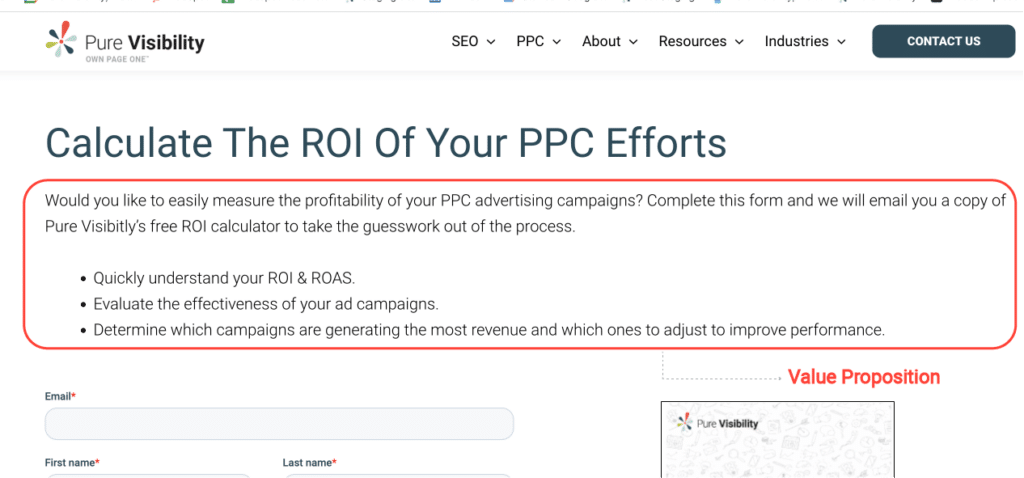
3. Use Engaging & Persuasive Headlines
In order to truly capture the attention of your target audience, it’s important to create headlines that are both engaging and persuasive. This means crafting a message that resonates with your audience while also highlighting the primary benefit or solution you’re offering.
Your headline should be clear and concise, while also leading your site visitors to explore further. By doing so, you’ll be able to leave your audience eager to learn more, ultimately improving your chances of conversion.
Remember, a powerful headline is key to creating a successful marketing campaign.
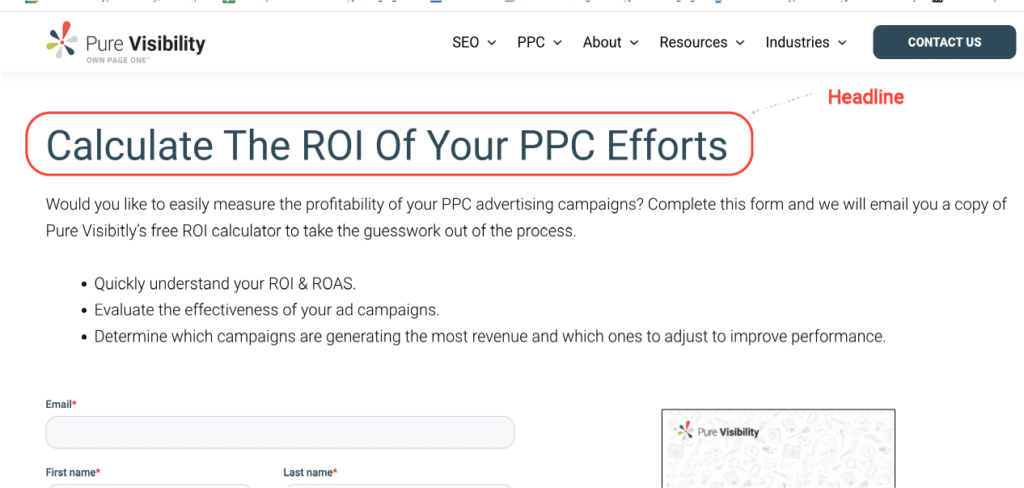
4. Simplify Navigation
When it comes to optimizing your landing page, one of the top best practices is to simplify your navigation. By removing unnecessary elements and streamlining the layout, you can prevent distractions that may sway visitors from taking the desired action.
It’s essential to make navigation intuitive and easy to use, guiding users toward your conversion goal. By doing this, you’ll not only keep users on your page, but you’ll also gain control over their journey and stay focused on your call to action.
A clean and straightforward design can reduce cognitive strain, allowing users to focus on your core message and increasing the likelihood of a successful conversion.
5. Optimize For Mobile
Given the prevalence of mobile devices, optimizing your landing page for mobile responsiveness is crucial. To ensure that your landing page is accessible and appealing across different screen sizes and devices, it is recommended that you optimize your page for mobile responsiveness.
A mobile-friendly design not only helps to enhance user experience, but it also prevents visitors from bouncing due to poor mobile optimization. With an optimized mobile page, you stand a better chance of increasing conversion rates and improving your ad rank.
So, if you want to keep up with the trends and remain competitive, optimizing your landing page for mobile should definitely be on your list of top practices!
6. Action-Oriented CTAs
The Call To Action (CTA) is an essential part of landing pages, as it helps to convert visitors into actual customers or subscribers. That’s where the best practice of using action-oriented CTA’s comes into play.
Your CTA should not only be visually prominent but also compelling enough to persuade visitors to take action. Avoid using vague language and instead, opt for persuasive phrases like “Grab Your Discount” or “Subscribe Now”.
It’s also important to position the CTA strategically so that it’s easy for visitors to locate and click. A landing page without a clear CTA can cause confusion and possibly lead to missed opportunities.

7. Leverage Trust & Social Proof
Building trust is vital for conversions. Include testimonials, reviews, trust badges, and case studies that demonstrate positive experience and reinforce the credibility of your offering. By demonstrating reliability, and credibility, you can ease visitors’ concerns and help increase their confidence in converting.
When it comes to converting website visitors into customers, building trust should be a top priority. Including trust badges, testimonials, reviews, and case studies are all excellent ways to demonstrate positive experiences and establish your offering’s credibility. Building this trust is crucial for encouraging potential buyers to take the leap and convert.
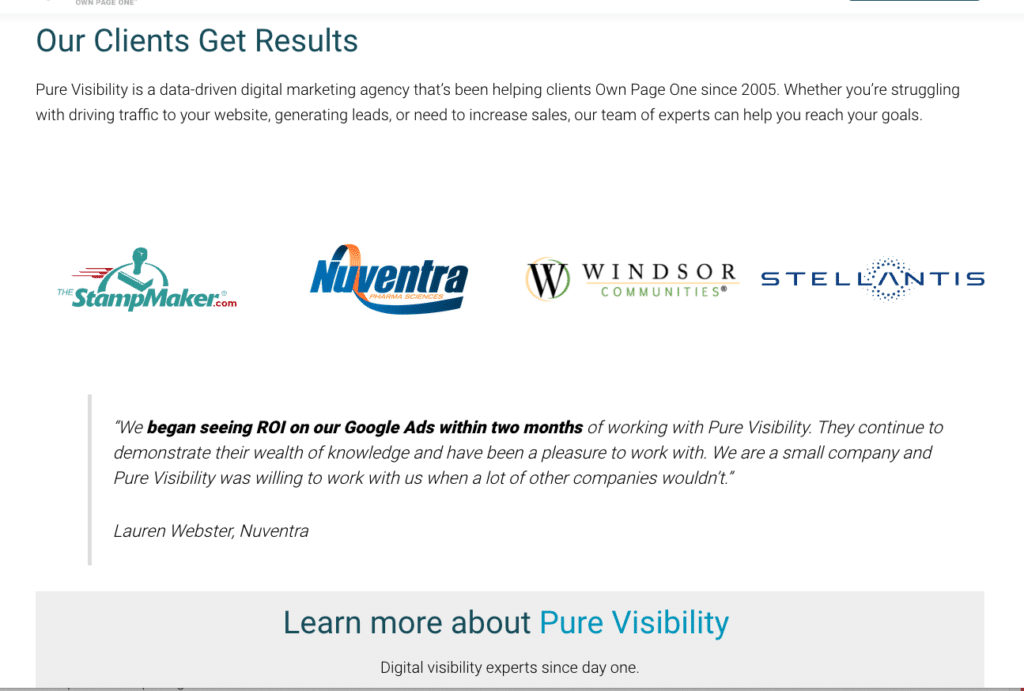
8. Streamline Form Process
When it comes to creating an effective landing page, keeping the form process or checkout process simple is key. By minimizing the number of fields and making the process user-friendly, you’ll reduce friction, making it easier for visitors to complete the desired action.
In doing so, you’ll prevent potential customers from abandoning the page due to a complicated checkout process or lengthy form. So, whether you’re collecting leads or completing transactions, remember to prioritize a streamlined form process for optimal results.
9. Use Visuals
Including high-quality images, videos, and graphics in your landing pages can improve the user experience and effectively communicate information. Not only do visuals make your content more engaging, but they can also convey information in a more effective and efficient way. Visuals can take any form, from infographics to pie charts, to images and videos.
By highlighting the benefits of your product or service and evoking emotion, you can encourage visitors to take action and convert.
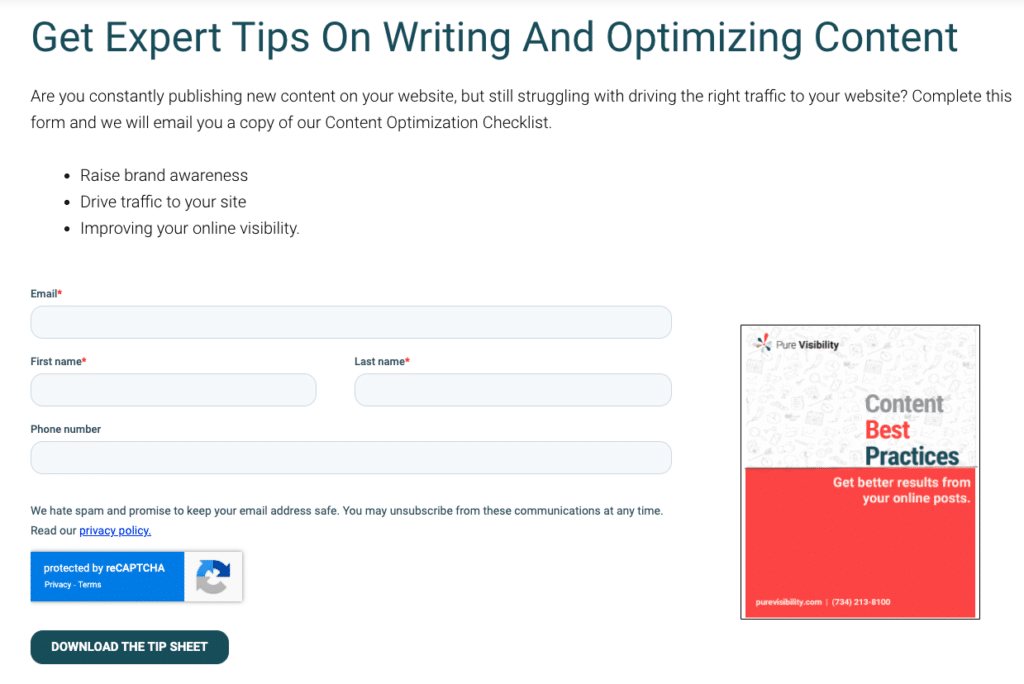
10. Continuous A/B Testing
When it comes to improving your landing page and maximizing conversions, A/B testing is a tried-and-true method. A/B testing involves creating variations of your landing page and testing them to identify which element performs best.
By experimenting with different headlines, CTAs, layouts, or visuals, you can gather data on what resonates most with your audience. Continuously testing and optimizing your landing page based on insights gained from A/B testing helps improve conversions over time.
How to make a landing page
When it comes to actually creating a PPC landing page, you want to evaluate whether your CRM offers built-in landing page capabilities that meet your requirements. If so, it may be convenient to build directly in your CRM.
- Some popular CRM’s with landing page builders include HubSpot, Marketo, and Salesforce.
Alternatively, if your CRM does not have adequate landing page functionality, or you prefer more flexibility and customization options, you may want to consider using a dedicated landing page plugin for your chosen platform.
- WordPress, for example, offers plugins like Elementor, Beaver Builder, and Thrive Architect, which provide drag-and-drop functionality and various design options.
To structure your landing page, start with a clear and attention-grabbing headline and subheadline a compelling subheadline that provides additional context or reinforces the main message. Use persuasive copy that focuses on how your offering solves your audience’s pain points and highlight benefits, key features and testimonials with bullet points.
- Remember to include visually appealing elements, such as images or videos, that support the content and engage visitors. Include a prominent call-to-action (CTA) that encourages visitors to take the desired action such as “Buy Now”, “Sign Up”, or “Download” with contrasting colors.
Finally, make sure to optimize your PPC landing page for conversions by ensuring your landing page loads quickly to minimize bounce rates. Make the CTA highly visible and use contrasting colors to attract attention. Keep the form fields minimal, only request essential information to increase conversion rates, and make the form highly visible above the fold to ensure visitors don’t have to scroll to take the desired action.
Landing page metrics
Landing page best practices are great to guide you when creating and optimizing your landing pages, but how do you measure success?
There are a few key metrics that you’ll want to pay attention to. These metrics can help you gauge the effectiveness of your PPC campaigns and identify areas for improvement.
Click-Through-Rate
Click-Through-Rate (CTR) measures the percentage of people who click on your ad and land on your landing page. It indicates the effectiveness of your ad in capturing the attention of users and enticing them to click through.
Conversion Rate
The conversion rate represents the percentage of visitors who completed the desired action on your landing page, such as making a purchase, filling out a form, or downloading a newsletter. It measures the effectiveness of your landing page in converting visitors into customers or leads.
Bounce Rate
The bounce rate indicates the percentage of visitors who navigate away from your lading page without taking any action or exploring further. A high bounce rate may suggest that your landing page doesn’t meet visitor expectations or lacks engagement.
Average Time On Page
This metric tracks the average amount of time visitors spend on your landing page. A longer average time on page can indicate that visitors are engaging with your content and finding it valuable.
Exit Rate
The exit rate represents the percentage of visitors who leave your landing page after viewing it as their last page. It can indicate potential issues with your landing page, such as slow page load time, that cause visitors to abandon your site.
When it comes to landing page design, the key is to prioritize a smooth user experience that meets expectations and encourages conversions. By following best practices for optimized design, you can boost your click-through rate and conversion rates. If you need help optimizing your landing pages, our team of experts is ready to offer data-driven actionable insights to help you improve your campaigns.






